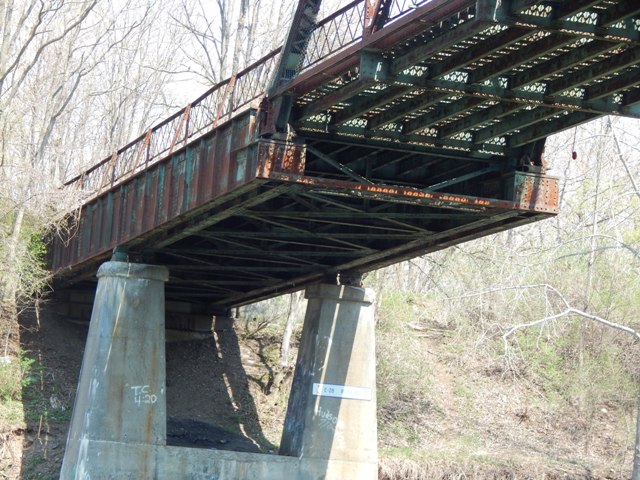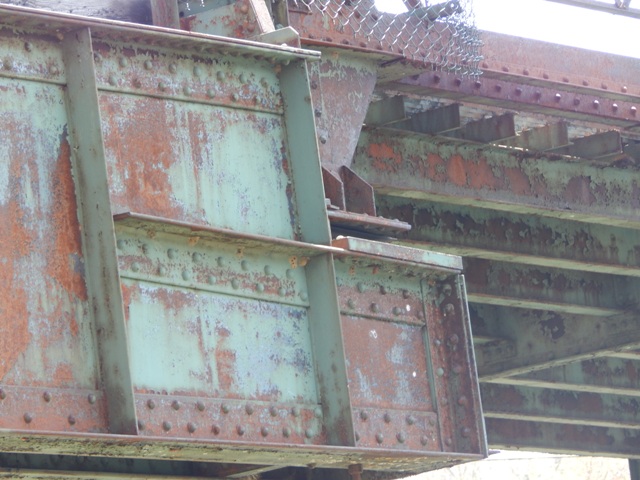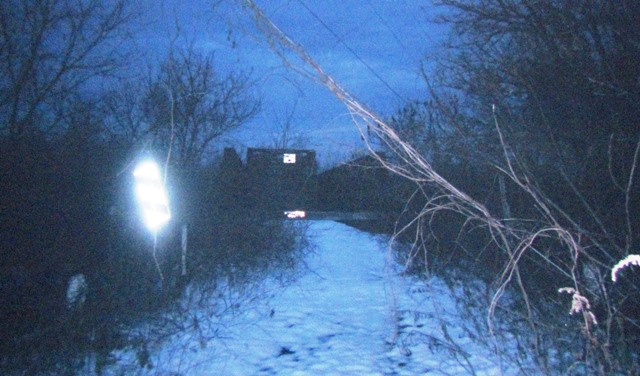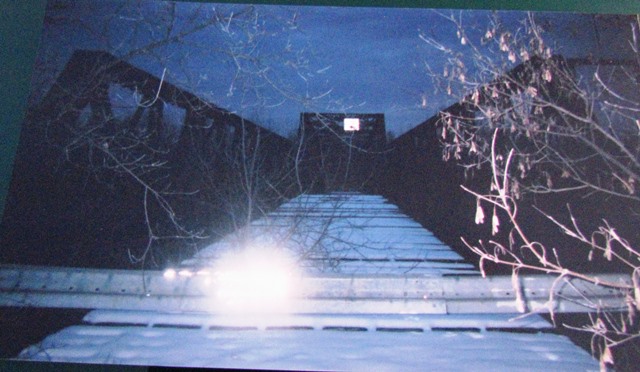We Recommend:
Bach Steel - Experts at historic truss bridge restoration.
BridgeHunter.com Phase 1 is released to the public! - Visit Now
River Road Bridge
Bridge E-28

Primary Photographer(s): Marc Scotti
Bridge Documented: June 19, 2010 and May 4, 2015
Rural: Montgomery County, New York: United States
Metal Cantilever 8 Panel Rivet-Connected Double-Intersection Warren Through Truss, Fixed and Approach Spans: Metal Cantilever Deck Girder, Fixed
1910 By Builder/Contractor: Penn Bridge Company of Beaver Falls, Pennsylvania
1948
200.0 Feet (61 Meters)
359.0 Feet (109.4 Meters)
15 Feet (4.57 Meters)
1 Main Span(s) and 4 Approach Span(s)
4425030

View Information About HSR Ratings
Bridge Documentation
This bridge is one of the most unusual bridges in the country. It consists of a standard New York State Erie/Barge Canal through truss span of about 148-150 feet, however the northeast end of the truss span does not bear on a pier, instead it bears on a plate girder span that is cantilevered out from a pier. As such, this bridge is a cantilever bridge. It is difficult to classify. Main spans of cantilever bridges are typically measured from pier to pier, although the National Bridge Inventory listing counted the length of the truss from bearing to bearing as a main span length. The span between pier points which includes all of the truss and the cantilever arm is estimated at 200 feet, which is what HistoricBridges.org is listing as the main span length. Most of this span is a truss bridge, so the main span type was listed as a through truss with eight panels, but technically the main span is partially a plate girder. The panels of the plate girder were not included in the main span panel count. The combination of span types to make a cantilever bridge is extremely unusual. Also unusual is the fact that only the northeast end of the bridge is a cantilever design. The other end of the truss span simply bears on a pier. As a cantilevered structure, the plate girder span has an anchor arm span, featuring an abutment bearing which is technically an anchorage and is composed of tension eyebars embedded in concrete at the abutment.
The plate girder structure is also unusual because it consists of a pair of girders on either side of the roadway, not just a single girder as is typical.
This bridge is abandoned. Some of the approach spans southwest of the truss span have been removed. However the truss span and the cantilever plate girder retain excellent historic integrity.
The bridge originally had a Warren pony truss approach span at the southern end which has been removed in recent years (well into the 2000s). The northern end is missing approach spans which may have been concrete slabs, as seen on other similar bridges in the state. The bridge was originally configured as a traditional simple span through truss with concrete piers, but the plate girder cantilever alteration was added when the canal was widened in 1948, which resulted in the removal of one of the concrete piers for the through truss. Regardless, the cantilevered plate girder is riveted and even as an alteration, it is a remarkable example of bridge engineering and the bridge including the cantilever system should be considered Eligible for Listing in the National Register of Historic Places under Criterion C, for its engineering design. The bridge is highly significant.
Included at the end of the photo gallery are shots of depression-era cable guard rails and a short section of one of the earlier generations of the Erie Canal.
View Archived National Bridge Inventory Report - Has Additional Details and Evaluation

Above: Detail showing the plate girder cantilever arm, and the truss bearing. Also note that the plate girder structure consists of a pair of girders on either side of the roadway, not just a single girder as is typical.

Above: Detail of truss span bearing on plate girder span.
Above: These two older photos by Joel Wyman are the only known photos that show the pony truss that used to exist here as an approach span.
![]()
Photo Galleries and Videos: River Road Bridge
Bridge Photo-Documentation
Original / Full Size PhotosA collection of overview and detail photos. This gallery offers photos in the highest available resolution and file size in a touch-friendly popup viewer.
Alternatively, Browse Without Using Viewer
![]()
Bridge Photo-Documentation
Mobile Optimized PhotosA collection of overview and detail photos. This gallery features data-friendly, fast-loading photos in a touch-friendly popup viewer.
Alternatively, Browse Without Using Viewer
![]()
Maps and Links: River Road Bridge
Coordinates (Latitude, Longitude):
Search For Additional Bridge Listings:
Bridgehunter.com: View listed bridges within 0.5 miles (0.8 kilometers) of this bridge.
Bridgehunter.com: View listed bridges within 10 miles (16 kilometers) of this bridge.
Additional Maps:
Google Streetview (If Available)
GeoHack (Additional Links and Coordinates)
Apple Maps (Via DuckDuckGo Search)
Apple Maps (Apple devices only)
Android: Open Location In Your Map or GPS App
Flickr Gallery (Find Nearby Photos)
Wikimedia Commons (Find Nearby Photos)
Directions Via Sygic For Android
Directions Via Sygic For iOS and Android Dolphin Browser
USGS National Map (United States Only)
Historical USGS Topo Maps (United States Only)
Historic Aerials (United States Only)
CalTopo Maps (United States Only)



